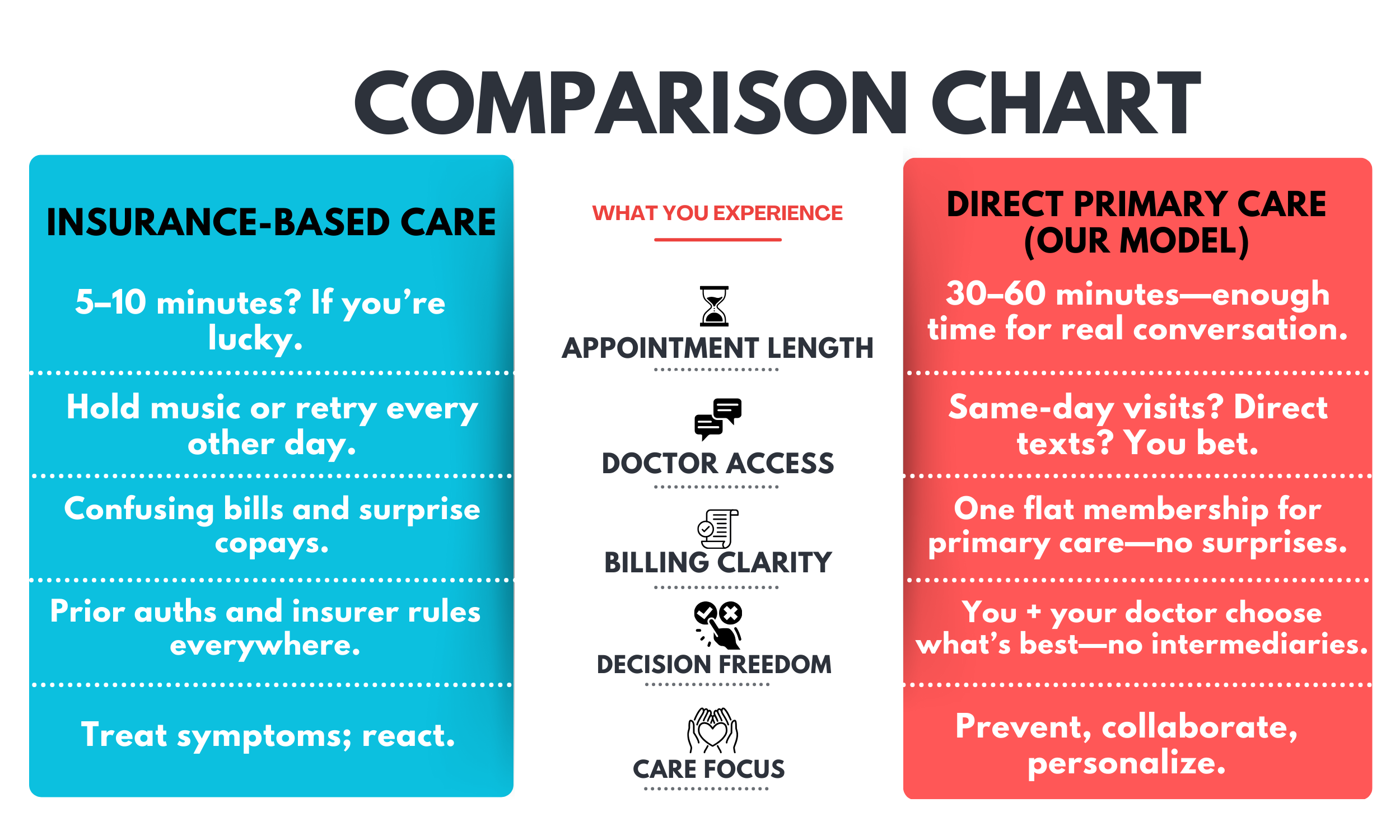Heads Up:
What Insurance Often Brings to the Table
Traditional insurance can feel like a roadblock dressed as a safety net. Common frustrations include:
Co-pays, deductibles, and confusing bills at every turn
Prior authorizations for simple tests
Insurance dictating what your provider can—and cannot—order
Doctor visits that feel rushed, because they're measured in seconds, not empathy



